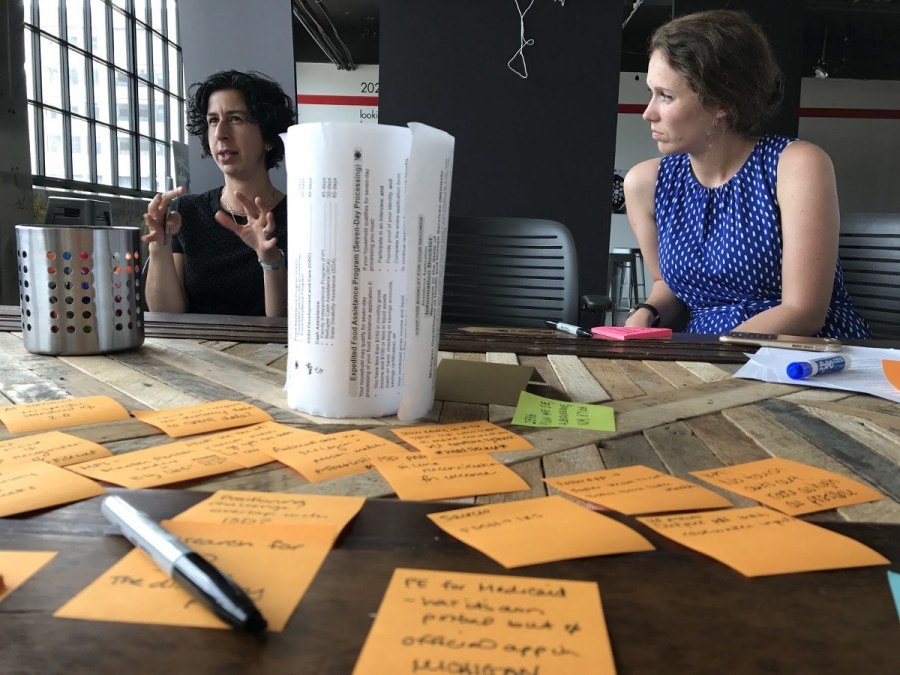Five states to modernize eligibility systems in new pilot partnership

Figuring out and accessing public assistance programs can be difficult for residents, and made more confusing by the often decades-old IT systems they are built on. But five states are getting help to redesign those systems in what could become a national model for eligibility systems modernization, a consortium partnering with the states announced on Tuesday.
The nonprofit Code for America has partnered with Nava Public Benefit Corporation and liberal think tank the Center on Budget and Policy Priorities to ensure that society’s safety net is backed by resilient and modern technology. The five states in the pilot are Alaska, Colorado, Louisiana, Michigan and Vermont, and were selected, the group says, for their geographical, political and demographic diversity as organizers eye a wider launch of the program.
“The pilots will give a state the opportunity to leverage human-centered design and agile methods to move faster on one aspect of their eligibility and enrollment process; to gather a wealth of user research, to rapidly prototype, test, and iterate, and ultimately to demonstrate impact on key outcomes to inform future work,” a press release from the group explains.
The work to modernize state IT systems that residents rely on for public assistance is a continuation of the work done in recent years by Code for America and Nava PBC , and also the U.S. Digital Service which has similarly sought to simplify government’s complex processes for public assistance.
“For people who need timely access to critical benefits, interacting with the government can become as time consuming as a part-time job,” the agency points out in a 2016 blog post .
Genevieve Gaudet, a program manager with the Nava Public Benefit Corporation, told StateScoop that this work is important because of how many people these services reach. More than 50 million residents access more than 80 services considered to be part of the social safety net each year, the consortium says, but tens of millions more “fall through the cracks.” According to Pew Research data from 2012, 71 percent of households contain an adult who has benefited from one of the six major federal entitlement programs.
Leading up to this program, Gaudet participated in a yearlong research project together with the other consortium partners, to meet and interview people involved at all stages of the public assistance process.
“A big takeaway for us is that everyone knows the technology in the gov tech ecosystem could be better and everyone wants to change but often making that change — building or buying better tech — sort of seems out of reach,” she said.
This new partnership aims to put new technology within reach as partner organizations in each state take on a common challenge, but each with a slightly different aim. In Michigan, teams will work to reduce how many days it takes to receive an eligibility determination. Alaska will launch digital tools to improve accessibility of benefits to residents of remote communities. Colorado will attempt to provide self-service options that reduce the state’s caseload. Louisiana will strive for a “unified application user experience” so the process is simpler and faster.
In Vermont, the state where the Nava Public Benefit Corporation is partnering, teams are searching for barriers to proving eligibility in an attempt to accelerate application processing.
State government’s oldest and most critical services often still reside on mainframes. The systems supporting benefits programs fall into this category, and they can be especially challenging to update. Technology is sure to present challenges in every state, but during the research phase, Gaudet said she discovered that there are social challenges that may not be refreshed as easily as an IT environment.
“We had this really memorable interview with a woman who applied for Medicaid and some folks on our design team were showing her prototypes we’d come up with to test out how we thought a particular website could be better,” Gaudet recalled. “And she said, ‘You know this looks really pretty, but it’s still the government.'”
Overcoming a lack of trust from the public is where the Center on Budget and Policy Priorities comes into play, Gaudet said — the think tank’s role is to help Code for America and her organization navigate the political and policy pitfalls tied to their technical projects. As the consortium attempts to ease access to services, she said, there are others who seek to remove access and eliminate services.
But ultimately, Gaudet said, the stakes are too high for states to fall short of their missions to serve their residents with effective and easy-to-use digital services.
“The reason we’re focusing here,” she said, “is because these services are the face of government for a ton of people.”






